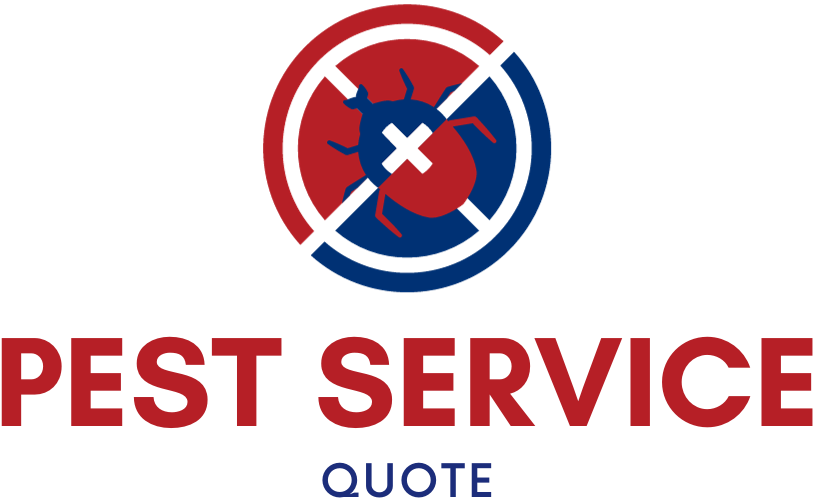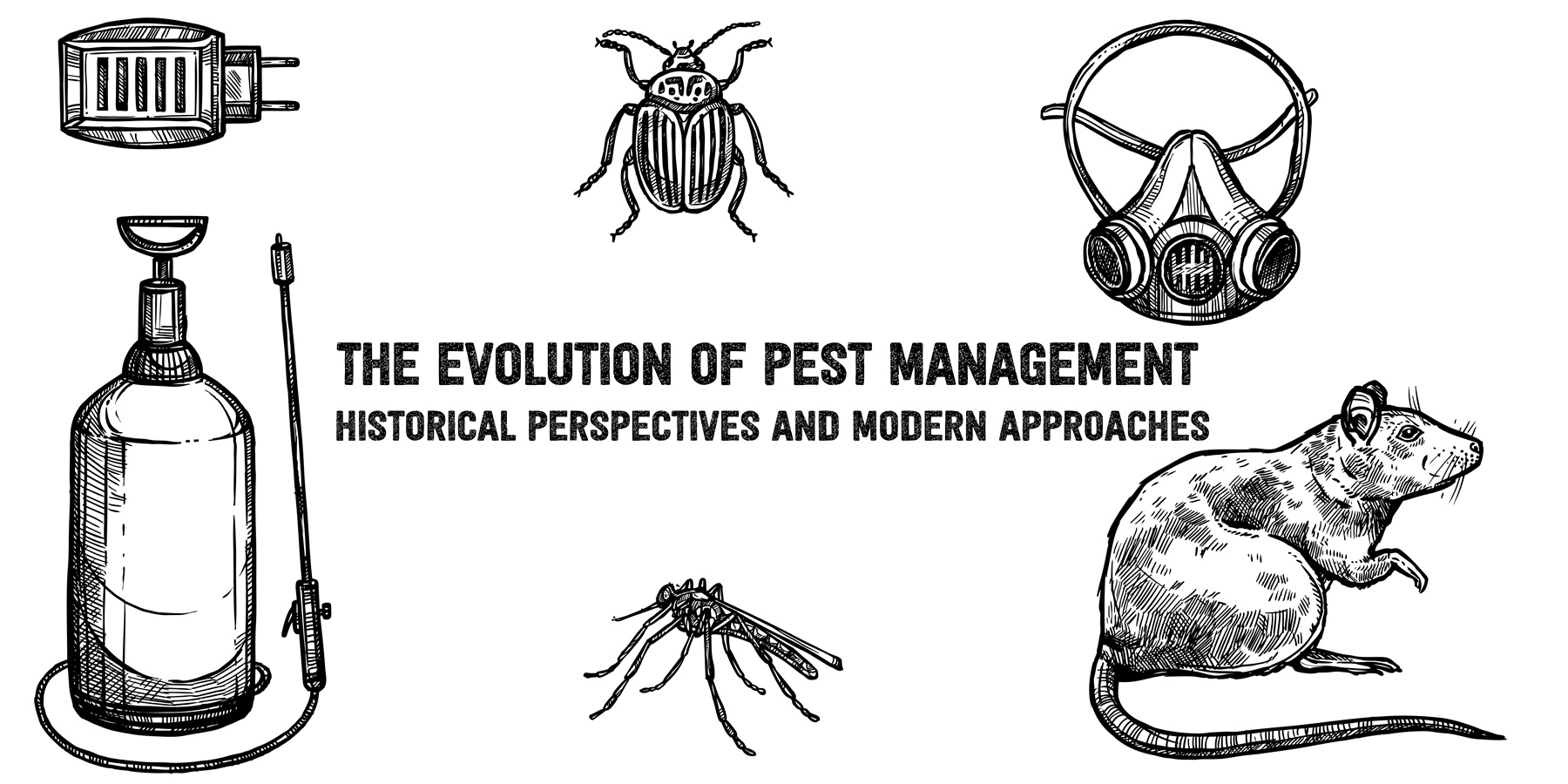Throughout history, humans have grappled with the challenge of controlling pests that threaten their health, food supplies, and environment. Integrated Pest Management has evolved from ancient practices that relied on rudimentary methods to modern science that utilizes cutting-edge technologies. This article embarks on a journey through time, exploring the evolution of innovative pest management from its humble beginnings to its current state as a sophisticated and environmentally conscious discipline. Along the way, we will delve into the innovative advancements that have shaped pest control practices, the principles and practices of integrated pest management, eco-friendly pest control methods, and the crucial role of pest management in safeguarding agricultural yields and ensuring global food security.
Pest Control History From Ancient Practices to Modern Science: Tracing the Origins of Pest Management
From time immemorial, humans have confronted the formidable challenge of controlling pests that threaten their health, food supply, and environment. Ancient civilizations displayed remarkable ingenuity in developing natural pest management methods. Crop rotation and companion planting were early techniques that disrupted pest life cycles and created diverse ecosystems, respectively. These practices showcased a deep understanding of natural pest control principles and highlighted the resilience of ancient agricultural practices.
As human societies progressed, biological pest control measures became more sophisticated, incorporating smoke, sulfur, and arsenic compounds. While effective, these substances posed health and environmental risks, necessitating the pursuit of safer and more sustainable solutions.
The field of pest management took a significant leap forward in the 18th century with the contributions of Jean-Henri Fabre, the father of modern entomology. Fabre’s meticulous observations and experiments laid the groundwork for a scientific approach to pest control, emphasizing the importance of understanding pest biology and ecology. His pioneering work shifted the focus from indiscriminate pest eradication to targeted and sustainable management practices.
The 20th century ushered in a revolution with the development of synthetic pesticides. These potent chemicals provided unprecedented pest control efficacy, boosting agricultural productivity. However, concerns about environmental impact soon emerged, prompting the exploration of alternative pest management strategies.
The Green Revolution brought forth advancements in pest management through high-yielding crop varieties and improved irrigation systems. These innovations reduced pest pressure and increased crop resilience. Additionally, the concept of integrated pest management (IPM) gained traction, advocating for a holistic approach that combines biological control, cultural practices, and judicious use of pesticides. IPM aims to minimize environmental harm while ensuring effective pest control.
In the 21st century, pest management continues to evolve, driven by technological advancements and a growing emphasis on sustainability. Precision agriculture, utilizing GPS and remote sensing technologies, enables targeted pest control, reducing chemical usage and environmental impact. Biological control agents, such as natural enemies of pests, are increasingly employed as eco-friendly alternatives to synthetic pesticides.
The journey of pest management is a testament to human adaptability and innovation. From ancient practices to modern science, the field has undergone a remarkable transformation, constantly striving to balance effective pest control with environmental sustainability.
Embracing Innovation: Exploring Cutting-Edge Technologies in Pest Control
The 21st century has witnessed a surge of innovation in pest management, driven by technological advancements and a growing emphasis on sustainability. Precision pest management techniques have emerged, utilizing data analytics and remote sensing technologies to target specific areas and pest species, minimizing environmental impact and optimizing resource allocation. Artificial intelligence (AI) and machine learning algorithms are being integrated into pest management systems, enabling real-time monitoring, predictive modeling, and automated decision-making. These technologies assist in identifying pest infestations early, optimizing treatment strategies, and reducing reliance on chemical pesticides.
In addition, the development of bio-pesticides and eco-friendly pest control alternatives has gained momentum. Bio-pesticides derived from natural sources, such as plant extracts, microorganisms, and pheromones, offer targeted pest control with reduced environmental toxicity. Eco-friendly methods like habitat modification, exclusion techniques, and biological pest control experts further contribute to sustainable pest management practices.
The Internet of Things (IoT) plays a significant role in modern pest management. IoT devices collect and transmit real-time data on pest activity, environmental conditions, and equipment status, enabling remote monitoring and control of pest management systems. This integration enhances efficiency, reduces labor costs, and allows for proactive pest management strategies.
Embracing innovation in pest control is essential for addressing evolving pest challenges and ensuring sustainable practices. By leveraging cutting-edge technologies, the pest management industry can minimize environmental impact, improve efficiency, and enhance the well-being of communities.
Striving for Balance: The Principles and Practices of Integrated Pest Management
Integrated pest management (IPM) is a holistic approach to innovative pest control that emphasizes environmentally friendly and economically sound practices. IPM aims to minimize the reliance on chemical pesticides and other potentially harmful methods by integrating multiple pest control techniques, including biological control, cultural practices, and judicious use of pesticides.
At the core of IPM is regular monitoring and assessment of pest populations and their natural enemies. This involves observing pest behavior, identifying pest species, and determining their population levels. By understanding the pest’s life cycle and biology, IPM practitioners can develop targeted and effective control strategies.
One of the key principles of IPM is the use of biological control agents. Biological control involves introducing or enhancing the population of natural predators, parasites, or pathogens that prey on or suppress pests. This method helps reduce pest populations without the need for chemical pesticides and preserves biodiversity by maintaining the balance of ecosystems.
Cultural practices play a crucial role in IPM. These practices involve modifying the environment or agricultural practices to make it less conducive to pest infestations. Examples of cultural practices include crop rotation, intercropping, and sanitation measures. By altering the habitat or disrupting the pest’s life cycle, cultural practices can effectively prevent pest outbreaks and reduce the need for chemical control.
When necessary, IPM incorporates the judicious use of pesticides. Pesticides are selected based on their target specificity, environmental impact, and potential for resistance development. IPM practitioners follow strict guidelines and regulations to ensure the safe and effective application of pesticides, minimizing the risks to human health and the environment.
IPM is a dynamic and adaptive approach that requires ongoing monitoring, evaluation, and adjustment. By continuously assessing the effectiveness of pest control strategies and incorporating new knowledge and technologies, IPM practitioners can refine their eco-friendly pest control methods to achieve long-term pest management success.
Nurturing Harmony with Nature: Eco-Friendly Pest Control Methods
In the realm of modern pest management, a paradigm shift is underway, placing emphasis on eco-friendly pest monitoring techniques that prioritize the well-being of our environment. These methods not only effectively manage pest populations but also preserve the delicate balance of nature.
One such approach involves enlisting the services of nature’s own guardians – biological control agents. This entails introducing natural predators, parasites, or pathogens of the target pest into the ecosystem. By capitalizing on nature’s innate mechanisms of pest regulation, biological control reduces the reliance on chemical pesticides, minimizing environmental harm and safeguarding biodiversity.
Imagine ladybugs gracefully descending upon a garden, waging war against the pesky aphids that threaten precious plants. Lacewings, with their delicate wings, swoop down to combat the menace of whiteflies, while parasitic wasps emerge as valiant warriors against caterpillar infestations. These natural enemies, when employed strategically, offer a sustainable and enduring solution to pest management.
Another eco-friendly strategy involves the deployment of physical barriers – a strategic defense against unwanted guests. Screens, traps, and exclusion devices stand as formidable obstacles, blocking pests from accessing their desired havens of food, shelter, and breeding grounds. This disruption of their life cycle effectively minimizes their impact, proving particularly effective against rodents, birds, and insects.
Habitat modification, an art form in pest control, involves subtly altering the environment to discourage pest infestations. This may entail removing vegetation that offers shelter to unwanted visitors, enhancing sanitation practices to eliminate potential food sources, and meticulously sealing cracks and crevices that serve as entry points. By skillfully modifying the habitat, pest populations are naturally suppressed, obviating the need for chemical interventions.
The advantages of embracing the methods of eco-friendly pest control are undeniable. These practices significantly reduce environmental pollution, sparing the air, water, and soil from toxic chemicals. Beneficial insects and wildlife, essential components of a thriving ecosystem, are preserved, maintaining the intricate web of life. Moreover, the risk of pest resistance, a growing concern with conventional pesticides, is substantially diminished.
By wholeheartedly adopting these sustainable practices, we forge a path towards harmonious coexistence with nature. The long-term health of our planet and its inhabitants is safeguarded, as we cultivate a world where humans and nature thrive in mutual respect and interdependence.
Protecting Crops and Ensuring Food Security: Pest Management in Agriculture
Pest control in agriculture is essential to protect crops and ensure food security. This section will discuss three key pest management strategies used in agriculture: utilizing biological control agents, implementing precision agriculture, and adopting crop rotation.
Utilizing biological control agents involves introducing natural enemies of pests into the agricultural environment. These agents can include predators, such as ladybugs and lacewings, or parasitoids, such as wasps and flies, that lay their eggs on or in the bodies of pests. By introducing these natural enemies, farmers can reduce pest populations without relying solely on chemical pesticides.
Precision agriculture involves the use of pest monitoring techniques to precisely target pest management efforts. This can include the use of GPS-guided tractors and sprayers to apply pesticides only where and when they are needed, as well as the use of sensors to monitor pest populations and environmental conditions. By using precision agriculture, farmers can reduce the amount of pesticides they use and minimize their environmental impact.
Crop rotation involves planting different crops in the same field in a sequence. This can help to break the life cycle of pests that are specific to certain crops, as well as improve soil health and fertility. By adopting crop rotation, farmers can reduce their reliance on pesticides and improve the sustainability of their farming practices.
In addition to these three key strategies, there are a number of other pest management techniques that farmers can use, including the use of physical barriers, such as fences and traps, and the use of cultural practices, such as crop sanitation and crop destruction. By integrating multiple pest management strategies, farmers can protect their crops and ensure food security while minimizing their environmental impact.



